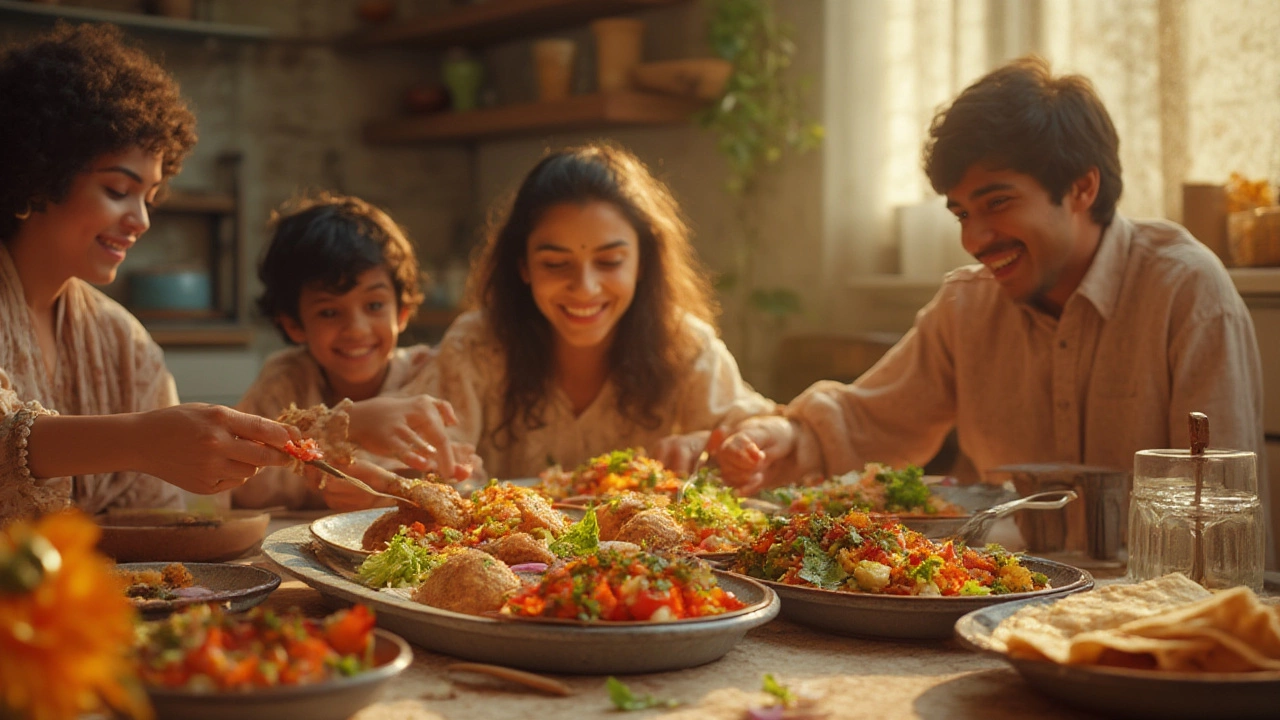Indian Food Diabetes Tips: Eat Flavorful, Keep Sugar in Check
If you love Indian food but worry about blood sugar, you’re not alone. The good news is that most Indian dishes can be tweaked to stay tasty and diabetic‑friendly. Below are easy changes you can make today, plus a few sweet ideas that won’t spike your levels.
Low‑Glycemic Staples and Smart Swaps
Start with the base of your meal. Instead of white rice, try brown basmati, quinoa, or cauliflower rice. These options add fiber and slow down sugar absorption. A quick tip: rinse brown rice before cooking and add a pinch of turmeric for extra flavor.
Whole lentils and beans are already low on the glycemic index. Make a simple dal by cooking moong or masoor with ginger, garlic, and a teaspoon of oil. Skip the heavy cream and finish with a squeeze of lemon – it brightens the taste without adding carbs.
When you love creamy curries, swap full‑fat coconut milk for light coconut milk or a blend of low‑fat yogurt. Yogurt adds tang and keeps the sauce light. Add plenty of non‑starchy veggies like spinach, okra, or bell peppers. They bulk up the dish and lower the overall carb load.
Spices themselves don’t raise blood sugar, so feel free to use cumin, coriander, mustard seeds, and fenugreek. Fenugreek seeds even help control glucose levels. Toast the seeds in a dry pan for a few seconds before grinding – it releases their aroma and makes the dish more satisfying.
Portion control matters. A palm‑sized serving of rice or roti, a generous portion of veg, and a moderate amount of protein keep the plate balanced. Use a small bowl for sauces; a little goes a long way.
Diabetic‑Friendly Sweet Treats
Craving sweets? Indian desserts can be lighter with a few swaps. Replace refined sugar with jaggery or a few drops of stevia in recipes like kheer or payasam. Jaggery has a lower glycemic impact and adds a caramel note.
For classic sweets like gulab jamun, make mini‑size balls and bake them instead of deep‑frying. Soak them in a light sugar‑free syrup flavored with cardamom and rose water. The result is a softer bite with far fewer carbs.
Try fruit‑based desserts. A bowl of fresh mango slices topped with a sprinkle of chaat masala feels Indian and refreshing. For a richer option, blend ripe banana with a dash of cardamom and a spoonful of low‑fat milk, then chill for a quick kulfi‑style treat.
When you make homemade ladoos, use roasted gram flour (besan), a little ghee, and a sugar substitute. The nutty flavor satisfies the craving, and the lower sugar keeps glucose stable.
Remember to enjoy sweets mindfully. Eat slowly, savor each bite, and stop before you feel full. Pair a small dessert with a protein source like a handful of nuts to blunt the sugar spike.
Putting these tips into practice doesn’t mean giving up flavor. With the right ingredients and portion sizes, Indian food can fit nicely into a diabetic meal plan. Start with one swap this week, notice how you feel, and keep building from there. Your taste buds and blood sugar will thank you.
Is Tandoori Chicken Safe for Diabetics? Nutrition and Healthy Tips
Wondering if diabetics can eat tandoori chicken? Learn about its nutritional facts, healthy preparation, and how it fits into a diabetes-friendly Indian diet.
